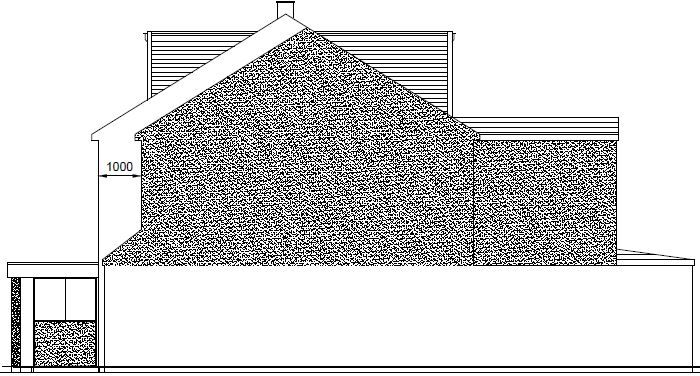58 Moore Avenue
Scope
This was an extensive proposal for a two storey side and rear extension, with dormer windows to front and rear and a porch to the principal elevation. Not only that, but the development had already been completed prior to the application being submitted to the council.
It is our experience that in such cases an appeal is warranted to protect the client from potential enforcement action that could be taken by the council.
Our Solution
Bradford Council refused permission for a two storey rear/side extension claiming the side extension would result in a terracing effect and the staggered alignment to the front relates unsatisfactorily to the host dwelling.
The starting point was to show that the side extension did not in fact create this terracing effect. In this case, with the extension already constructed, it made for a less complex argument. By introducing photogrpahic evidence to support this argument we were able to provide the Planning Inspector with sufficient justification to discount this reason for refusal:
I have considered the Council’s concerns regarding terracing, however there is no evidence before me that the neighbouring property is likely to similarly extend, or that the cumulative effect of such developments would necessarily be harmful to the character and appearance of the area. In any event, I must determine the appeal on the evidence before me."
In the second reason for refusal, Bradford Council put forward the argument that the staggered nature of the side extension related 'unsatisfactorily' with the host dwelling and surrounding area. As can be seen on the side elevation drawing below, the extension is set back at first floor level by 1.0m.

This is a surprising reason for refusal given we see that Councils have a tendency to refuse side extensions if there is no set back from the principal elevation. Whilst the set back here is at first floor level only it is generally accepted that this would be sufficient to satisfy requirement that the side extension appear subservient to the host dwelling.
Using the knowledge we gained from the Site Inspection, we were able to demonstrate that there are a number of properties within the vicinity of the Appeal Site that had a similar design. In addition to the other arguments we put forward resulted in the Inspector finding in our clients favour.
"I have considered the design principal on page 20 of the SPD regarding staggered front elevations. However, this relates to buildings with flat front walls, whereas the appeal property has a varied frontage created by a two storey bay window, and a porch. While the front elevation of the extension would have a staggered appearance, it would be behind the main front elevation of the house and would not appear prominent or incongruous."
"Overall, I find that the extension would appear unobtrusive within the context of the site. It would not have a detrimental impact on the street scene, and consequently the character and appearance of the area would not be harmed. I consider the proposed materials to be acceptable, and a planning condition would ensure the bricks used would match the existing, and that the roof materials are similar to the existing roof."
Having been faced with the very real prospect of having to remove the extension, the approval gained via the Appeal route resulted in a very happy client. Having seen how the Inspector viewed the arguments we raised in this case, we have been able to apply a similar strategy to other appeals we have submitted since then, most notably at 60 Moorside Road.
